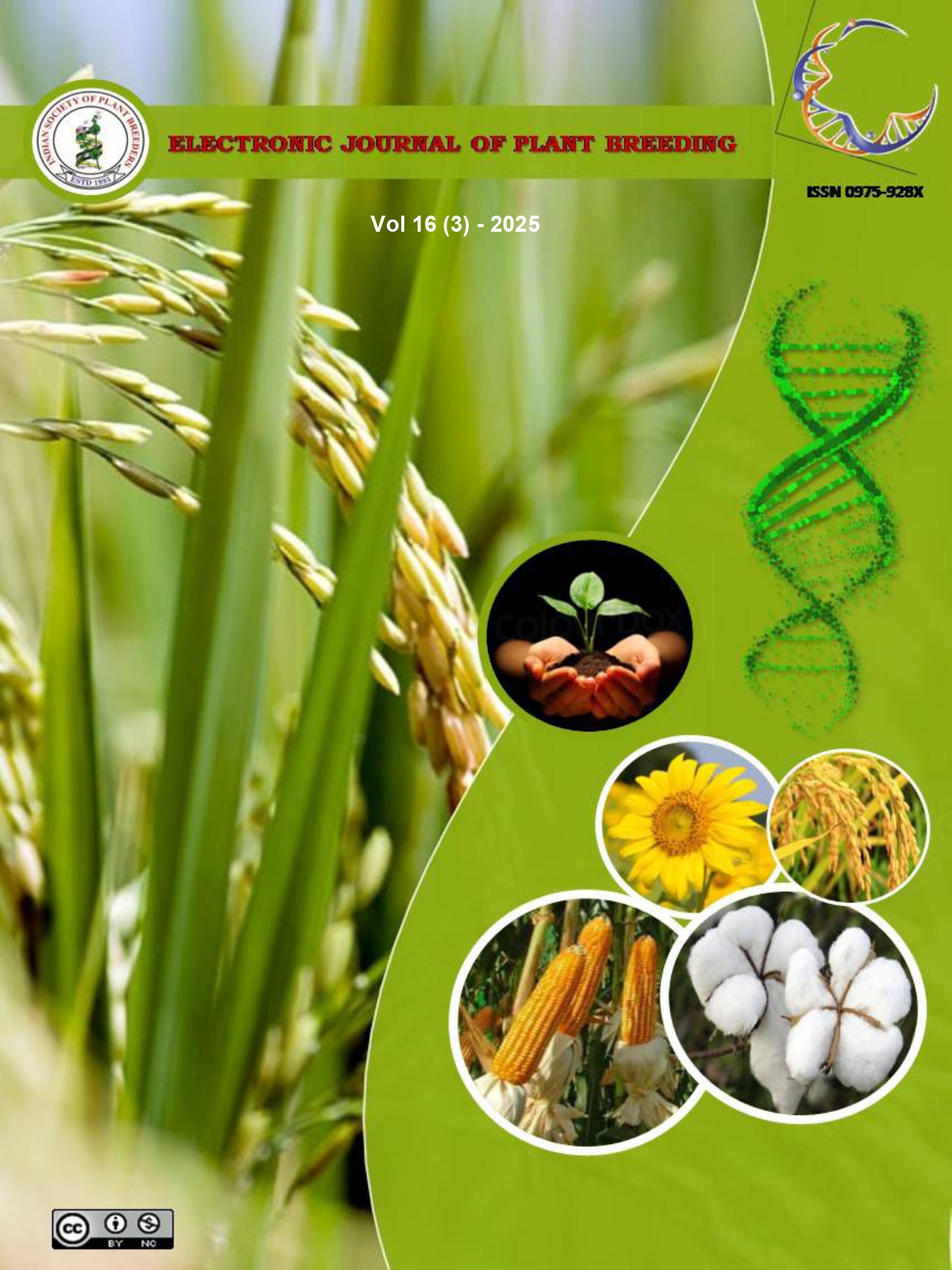Deciphering multi‑cross trait correlations to enhance yield and drought resilience in soybean (Glycine max)
Abstract
Soybean productivity is highly sensitive to water availability, especially in rainfed and drought-prone environments. Understanding the relationships among yield-related and morpho-physiological traits under varying moisture regimes can guide breeding programs for drought resilience and yield stability. This study investigates the interrelationships among morpho-physiological and yield-related traits in soybean under contrasting water regimes. Three soybean crosses (NRC 37 × EC 602288, JS 20-98 × EC 602288, and KDS 1173 × EC 602288) derived F3 progenies were evaluated under drought and irrigated conditions. Simple correlation analysis was performed to elucidate the association patterns among traits contributing to yield per plant (YPP). Across all crosses, under drought stress, physiological traits viz. relative leaf water content, canopy temperature depression, specific leaf weight, normalized difference vegetation index (NDVI) at pod filling stage, canopy temperature, root-to-shoot ratio showed strong correlations with yield per plant (YPP). In contrast, phenological and reproductive traits, including days to 50% flowering (DFF), days to maturity (DPM), number of pods per plant (NPP), and harvest index (HI), exhibited higher correlations under irrigated regimes. The consistently high association of NDVI at R5 stage with YPP across both conditions highlights its potential as a rapid, non-destructive selection index for soybean improvement. These consistent trait associations across genetic backgrounds support a dual strategy for breeding programs emphasizing physiological resilience under water stress and reproductive development under optimal conditions.

